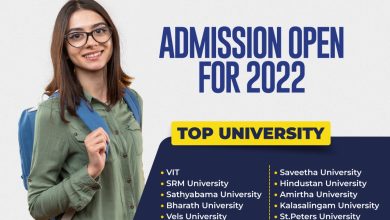How arthroscopic surgery can help you recover from a shoulder injury

Introduction
Arthroscopy is a minimally invasive surgical procedure that uses a small camera and surgical instruments to evaluate and repair the tissues inside a joint. Patients can frequently leave the hospital the same day because the operation is typically done as an outpatient.
What is arthroscopic surgery?
Arthroscopy is a surgical procedure that allows a doctor to see inside a joint without making a large incision. The doctor inserts a small tube called an arthroscope into the joint through a small incision. The arthroscope has a camera and a light on the end of it, which allows the doctor to see inside the joint on a video monitor.
How does it work?
Arthroscopy is performed under general anesthesia, which means that you will be asleep during the procedure. The doctor will make a small incision in the skin over the joint. The arthroscope is then inserted through the incision and into the joint. The doctor will then inflate the joint with fluid to create more space to work. The doctor will use the arthroscope to view the inside of the joint and to insert surgical instruments to make repairs.
What are the benefits of arthroscopic surgery?
- Smaller incisions: This leads to less pain, scarring, and risk of infection.
- Faster recovery: Patients typically recover from arthroscopic surgery more quickly than from traditional open surgery.
- Improved visualization: The arthroscope provides the doctor with a better view of the joint than is possible with traditional open surgery. This allows the doctor to make more precise repairs.
If you are considering arthroscopic surgery, be sure to talk to your doctor about the risks and benefits of the procedure. You may also want to consider finding the best arthroscopic surgeon in Ahmedabad. There are many qualified surgeons in the city, so it is important to do your research and find one who is experienced in performing arthroscopic surgery.
Types of shoulder injuries that can be treated with arthroscopic surgery
- Rotator cuff tears: Four muscles and tendons make up the rotator cuff, which surrounds the shoulder joint. These muscles help to keep the shoulder joint stable and allow for movement. When one or more of these muscles and tendons are injured, a rotator cuff injury happens.
- Shoulder impingement: Shoulder impingement is a condition that occurs when the tendons of the rotator cuff rub against the acromion, a bony prominence at the top of the shoulder blade.
- Biceps tendonitis: The biceps tendon connects the shoulder joint to the biceps muscle. Biceps tendonitis is an inflammation of this tendon.
- Labrum tears: The labrum is a ring of cartilage that surrounds the glenoid, the socket of the shoulder joint. A labrum tear can occur from a traumatic injury or from overuse.
- Adhesive capsulitis: Adhesive capsulitis is a condition that causes the shoulder capsule to become tight and stiff. It can be caused by an injury or by a medical condition, such as diabetes or rheumatoid arthritis.
- Arthroscopy can be a very effective treatment for these injuries. It allows the surgeon to see inside the joint and to make repairs without making a large incision. This leads to less pain, scarring, and risk of infection. Patients typically recover from arthroscopic shoulder surgery more quickly than from traditional open surgery.
If you are considering arthroscopic surgery for a shoulder injury, be sure to talk to your doctor about the risks and benefits of the procedure.
What to Expect After Arthroscopic Shoulder Surgery
Shoulder arthroscopy is a minimally invasive surgery that allows your doctor to see inside your shoulder joint and make repairs without making a large incision. This type of surgery is often used to treat a variety of shoulder conditions, including rotator cuff tears, labral tears, and arthritis.
After arthroscopic shoulder surgery, you can expect to experience some pain and swelling. You will also likely need to wear a sling for a few weeks to protect your shoulder.
Recovery time
The recovery time for arthroscopic shoulder surgery varies depending on the severity of your condition and the extent of the surgery. In general, most people are able to return to their normal activities within 1-6 months. However, it may take longer for some people to regain full range of motion and strength in their shoulder.
Pain management
Pain after arthroscopic shoulder surgery is usually mild to moderate. Your doctor will prescribe pain medication to help you manage your pain. You may also want to try using ice and heat therapy.
Rehabilitation
Rehabilitation is an important part of the recovery process after arthroscopic shoulder surgery. Your doctor or physical therapist will create a rehabilitation plan for you that includes exercises to improve your range of motion, strength, and flexibility. You will need to follow this plan carefully to get the best results from your surgery.
Tips for a smooth recovery
- Get plenty of rest.
- Follow your doctor’s instructions carefully.
- Use ice and heat therapy to reduce pain and swelling.
- Do your rehabilitation exercises as directed by your doctor or physical therapist.
- Avoid lifting heavy objects or doing any activities that could put stress on your shoulder for at least 6 weeks.
Complications of Arthroscopic Shoulder Surgery
Arthroscopic shoulder surgery is a minimally invasive procedure that is often used to treat a variety of shoulder conditions, including rotator cuff tears, labral tears, and arthritis. While this surgery is generally safe, there are some potential complications that can occur.
Infection: Infection is a rare complication of arthroscopic shoulder surgery, but it can occur. If you develop an infection after surgery, you may experience pain, redness, swelling, and warmth around the incision site. You may also have fever and chills. If you develop any of these symptoms, it is important to see your doctor right away.
Bleeding: Bleeding is another rare complication of arthroscopic shoulder surgery. If you experience bleeding after surgery, you may notice swelling, bruising, or a collection of blood (hematoma) around the incision site. In most cases, bleeding will resolve on its own. However, if the bleeding is severe, it may require medical attention.
Nerve damage: Nerve damage is a rare but serious complication of arthroscopic shoulder surgery. If you experience nerve damage, you may experience numbness, tingling, or weakness in your shoulder, arm, or hand.
Tendonitis: Tendonitis is an inflammation of the tendons that attach the muscles to the bones in the shoulder. This is a common complication of arthroscopic shoulder surgery, especially if the surgery involves repair of the rotator cuff. Tendonitis can cause pain, swelling, and stiffness in the shoulder.
Conclusion
Arthroscopic shoulder surgery is a minimally invasive procedure that can be used to treat a variety of shoulder injuries, including rotator cuff tears, labral tears, and arthritis. The procedure has many benefits, including a shorter recovery time, less pain, and a lower risk of complications. If you are considering arthroscopic shoulder surgery, be sure to talk to your doctor about the risks and benefits of the procedure.
Shivanta Hospital is a leading multispeciality hospital in Ahmedabad that offers a comprehensive range of orthopedic services, including arthroscopic shoulder surgery. The hospital’s team of experienced orthopedic surgeons is highly skilled in performing arthroscopic shoulder surgery and has a proven track record of success. Shivanta Hospital is also equipped with state-of-the-art facilities that ensure the highest quality of care for patients undergoing arthroscopic shoulder surgery.
If you are considering arthroscopic shoulder surgery, I would recommend that you consult with a doctor at Shivanta Hospital. They will be able to assess your condition and recommend the best treatment option for you.





